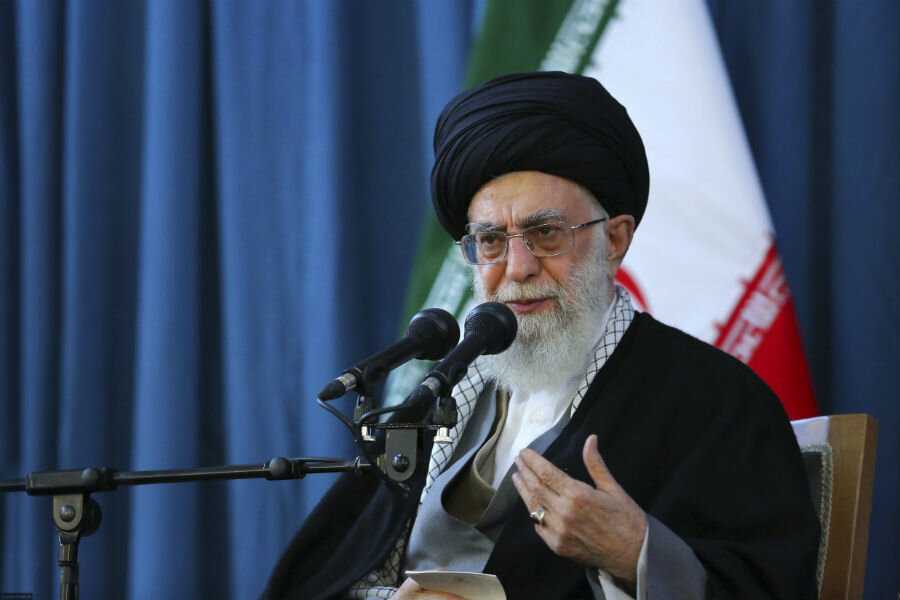John Kerry says Iran is pulling troops out of Syria. Is it?
Loading...
| Washington
The Obama administration is making the case that Iran is drawing down its elite fighting force from Syria in an effort to allay fears that Tehran is using its powerful Islamic Revolutionary Guard Corps in Syria to strengthen its influence across the Middle East. Yet the Iranian government said Monday it has dispatched commandos to the war and it is still taking high-ranking casualties.
Secretary of State John Kerry, who is deeply involved in trying to broker a political solution to end the five-year-old civil war between President Bashar Assad and rebels, told Congress in late February that Iran was recalling its IRGC forces from Syria.
"On Iran, let me just inform everybody here that the IRGC has actually pulled its troops back from Syria," Kerry told the House Foreign Affairs Committee. He said Iran's supreme leader Ayatollah Ali Khamenei "pulled a significant number of troops out. Their presence is actually reduced in Syria."
Other administration officials have backed Kerry's assertion.
U.S. officials, who were not authorized to publicly discuss Iran's role in Syria and spoke only on condition of anonymity, said Tehran's drawdown of IRGC forces will compel Assad to rely more on his own forces, which lack the training and intelligence capabilities of the IRGC.
But experts say that even if the IRGC has trimmed forces, the pro-Iranian Shiite militias Tehran helped create are still fighting. Iran stepped up its fighting in Syria in October 2015, sending mainly IRGC officers to direct Shiite foot soldiers from other nations, including Iraq, Afghanistan and Pakistan.
"Iran has done so much to strengthen the Assad regime — stabilize the Assad regime — through the creation of these militia groups," said Scott Modell, a former CIA officer who has conducted operations throughout the Middle East.
"They don't want to just build up their militia groups and leave. This is their way of creating a lasting footprint" across the region, he said. "This isn't Russia where they make sure to shore up Assad and then they downsize."
A senior congressional staffer said what the U.S. is seeing from the Iranians is not different from what it is seeing from the Russians — a withdrawal of some number of forces and resources that does not significantly change the battlefield. The staffer spoke only on condition of anonymity.
Russia began supporting Assad with airstrikes on Sept. 30, helping his military reverse the tide of war and make some key advances. President Vladimir Putin recently ordered a pullout of some Russian warplanes from Syria, but said that strikes against the Islamic State group and the al-Qaida-linked Nusra Front will continue. Those groups have been excluded from a Russian- and U.S.-brokered cease-fire that began on Feb. 27 and has largely held.
Amir Ali Hajizadeh, the head of the IRGC's aerospace division, told reporters on March 9 that Iran is still deploying troops to Syria. On Monday, Iran's semiofficial Fars news agency quoted Gen. Ali Arasteh, deputy chief liaison of the Iranian Army's Ground Force, as saying that the army has dispatched a number of commandos to Syria.
Iran was training, advising and assisting Syrian forces through September of last year, but stepped up its activity a month later after Russia began its air campaign. It's unclear exactly how many Iranians are fighting in Syria, but Iranian deaths rose significantly in mid-October with reports that 1,500 more Iranian troops had been deployed to Syria, according to a new report by the Critical Threats Project at the American Enterprise Institute, a conservative-leaning policy institute in Washington.
Reports surfaced last year that Iranian forces were pulling out of Syria.
But "it is more likely that the IRGC was rotating and repositioning its units, however, for casualties began to pick up again in early December," said Frederick Kagan who wrote the report with Paul Bucala.
According to the report, Iranian media and other sources reported at least 187 Iranian casualties between October 2015 and Feb. 26. Since the report was published, the authors have recorded five more Iranian deaths, including one during the recent battle to recapture the ancient Syrian city of Palmyra, which was conducted by Syrian troops under the cover of Russian airstrikes.
The ranks of IRGC killed in Syria suggest that Iran has been sending mostly officers — not enlisted military personnel — to the fight. Iranian officers accounted for 80 of 132, or 60 percent, of the casualties reported among the IRGC ground forces and navy between October 2015 and February, the report said. "No normal fighting force with a full complement of all ranks takes 60 percent of its casualties among its officers however much they lead from the front," the authors said.
Nicholas Heras, an expert on the Syrian war at the Center for a New American Security in Washington, said he didn't think the IRGC was disengaging from Syria. IRGC advisers were sent into Syria to stand up Syrian paramilitary forces throughout areas controlled by Assad, he said. After that, the IRGC concluded that Assad's military needed more reserve manpower, so it facilitated the movement of predominantly Iraqi Shia militias into Syria, Heras said.
"Now the Iraqi Shia militias are training and advising Afghani, Pakistani, and other nationality Shia militias that the IRGC is deploying to Syria in direct-action combat roles," he said.
By saying the Iranians are leaving, the U.S. is leaving the impression that the Russians and the Iranians are on board with de-escalation in Syria, said Tony Badran, research fellow at the Foundation for Defense of Democracies, which has been critical of the recent nuclear deal with Iran. "It's a military game with an eye on the politics," Badran said.







